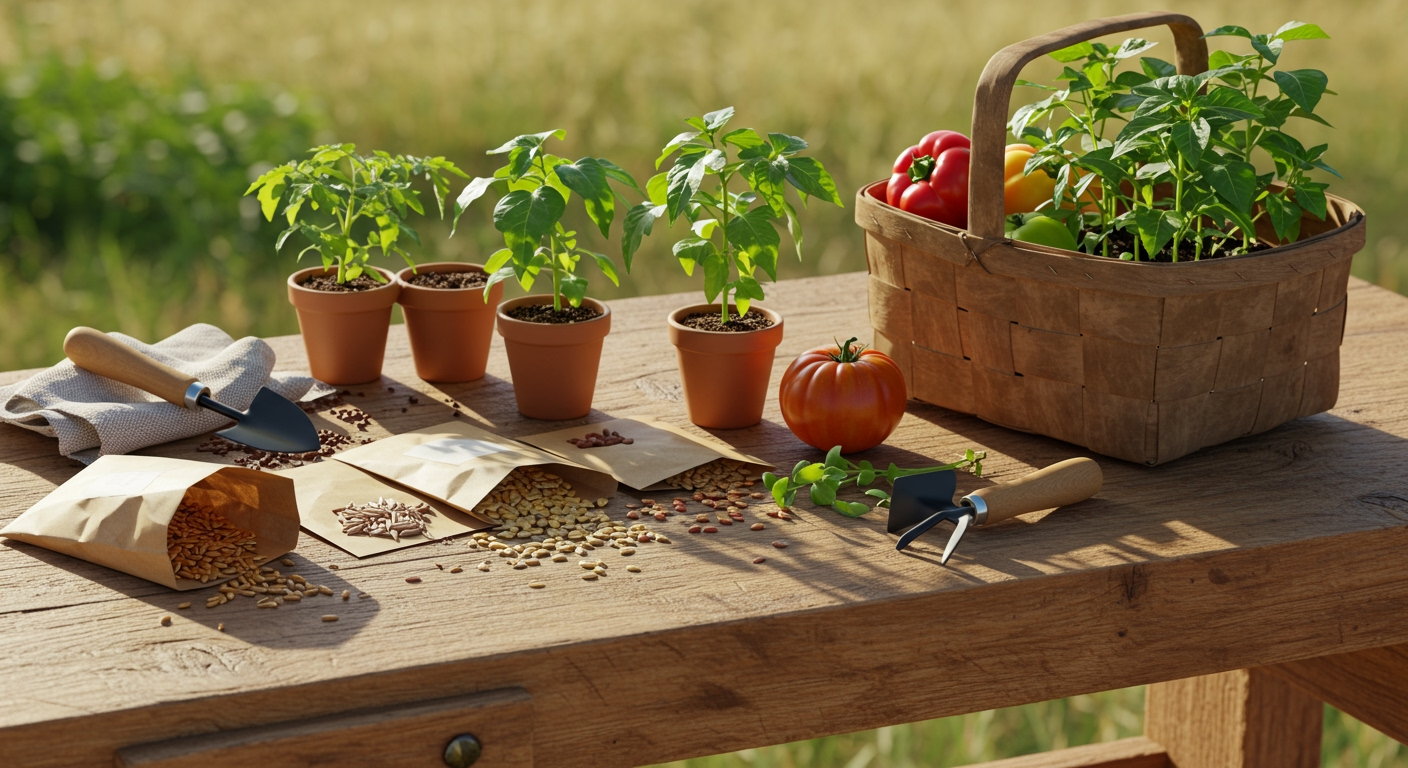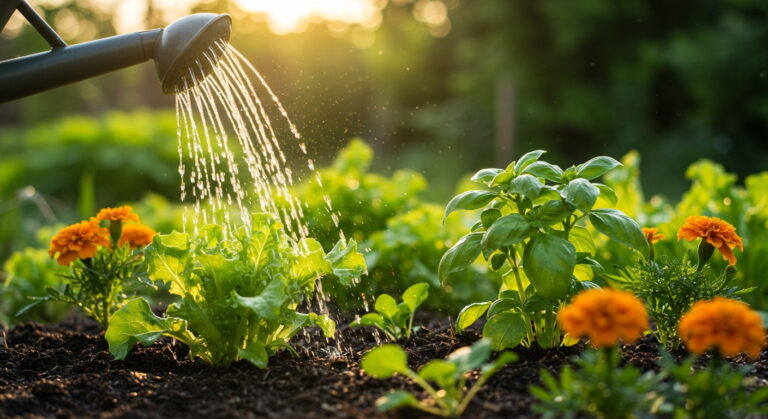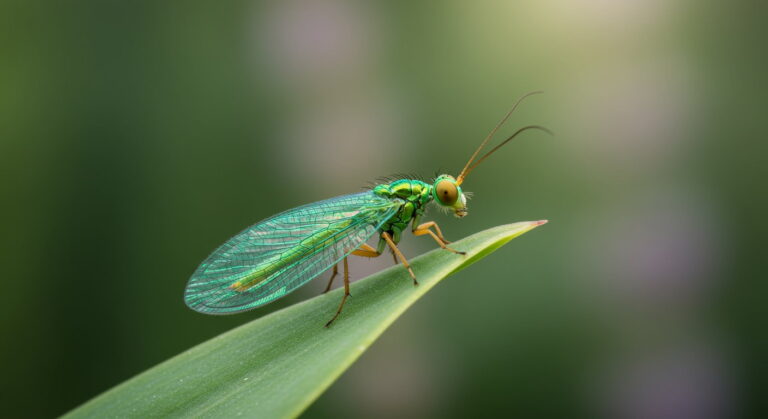Heirloom Seeds Amish
The Enduring Legacy: Heirloom Seeds and the Amish Contribution to Genetic Diversity
In an era increasingly dominated by mass production and genetic uniformity, the practice of cultivating heirloom seeds stands as a testament to agricultural heritage, resilience, and diversity. Central to this tradition, and often synonymous with its preservation, are the Amish communities across North America. Their unique cultural values, commitment to self-sufficiency, and historical connection to the land have positioned them as unintentional, yet vital, custodians of countless irreplaceable plant varieties. This article delves into the world of heirloom seeds, highlighting the profound role the Amish have played in safeguarding these genetic treasures and exploring their significance for modern gardening, food security, and ecological balance.
Understanding the Heirloom Concept: More Than Just Old Seeds
The term “heirloom” often conjures images of rustic charm and a bygone era, but its definition in the context of seeds is precise and critical. At its core, an heirloom seed refers to an open-pollinated variety that has been passed down through generations, typically for 50 years or more, or originating before World War II when commercial hybridization became widespread. This lineage implies several key characteristics:
- Open-Pollinated (OP): Unlike hybrid seeds (F1), which are the result of controlled crosses between two distinct parent lines and do not breed true from saved seed, open-pollinated varieties reproduce themselves. Seeds saved from an open-pollinated plant will produce offspring that are genetically very similar to the parent plant, provided there was no cross-pollination with other varieties. This trait is fundamental to seed saving and the continuous propagation of specific varieties.
- Genetic Stability and “True to Type”: Over many generations, open-pollinated heirlooms stabilize their genetic traits, meaning that a plant grown from an heirloom seed will consistently exhibit the same characteristics (e.g., fruit shape, color, flavor, growth habit) as its parent plants.
- Historical and Cultural Significance: Many heirlooms carry stories, traditions, and historical connections. They might be family heirlooms passed down through a specific lineage, commercial heirlooms that were once widely grown but have since fallen out of favor with industrial agriculture, or “community heirlooms” shared within a particular group, such as the Amish.
The distinction between heirlooms and modern hybrid seeds is not one of superiority but of purpose. Hybrids are often bred for specific commercial traits like uniformity, disease resistance, shelf life, or high yield under particular conditions. Heirlooms, by contrast, are valued for their diversity in flavor, color, texture, adaptability to local conditions, and, crucially, their capacity to be perpetuated by the gardener through seed saving.
The Amish: Unwitting Stewards of Agricultural Heritage
The Amish commitment to a simple, agrarian lifestyle, strong community bonds, and a degree of separation from mainstream society has inadvertently made them indispensable preservers of agricultural biodiversity. Their approach to farming is rooted in self-sufficiency and traditional practices, which naturally aligns with the cultivation and perpetuation of heirloom varieties.
A Culture of Self-Reliance and Stewardship
Amish communities prioritize producing their own food, not just for sustenance but as a central tenet of their way of life. This means growing a wide range of fruits, vegetables, and grains adapted to their local climate and soil conditions. For centuries, before the advent of commercial seed companies and widespread hybridization, saving seeds from the most robust and productive plants was a necessity. This practice continued within Amish communities long after it declined in the broader agricultural landscape.
- Community Networks: Within Amish settlements, seeds and plant knowledge are often shared freely among families and neighbors. A particularly successful variety might spread quickly through a community, adapting further to the local microclimate and soil conditions over successive generations.
- Isolation and Traditionalism: While not entirely isolated, the Amish tendency to limit exposure to external influences meant they were slower to adopt modern agricultural practices, including the reliance on commercially produced hybrid seeds. This cultural conservatism helped shield their traditional seed varieties from the pressures of commercial agriculture.
- Practicality Over Novelty: Amish farmers select varieties based on practical traits: good flavor, reliable yield, suitability for canning and storage, and adaptability to their specific growing conditions. Many popular “Amish” heirlooms are renowned for these very qualities, such as the ‘Amish Paste’ tomato, celebrated for its dense flesh and excellent sauce-making qualities, or the ‘Amish Starflower’ melon, known for its superb flavor.
The Amish do not actively market themselves as “heirloom seed savers” in the modern sense. Rather, their seed saving practices are a natural outgrowth of their values: hard work, good stewardship of the land, family legacy, and a practical approach to providing for their needs. This organic, continuous cultivation has ensured the survival of countless varieties that might otherwise have been lost.
Why Preserve Heirloom Seeds? Benefits Beyond Nostalgia
The preservation and cultivation of heirloom seeds offer a multitude of benefits that extend far beyond a sentimental connection to the past. These advantages are crucial for individual gardeners, local food systems, and global food security alike.
Enhancing Flavor and Culinary Experience
One of the most immediate and appealing benefits of heirlooms for home gardeners is their often superior flavor. Many modern hybrid varieties are bred for traits like uniformity, disease resistance, and shelf stability, sometimes at the expense of taste. Heirlooms, conversely, were selected over generations primarily for their culinary qualities, leading to a much richer and more diverse palette of flavors, textures, and aromas. Imagine the difference between a mass-produced, bland supermarket tomato and a juicy, complex ‘Brandywine’ or ‘Cherokee Purple’ heirloom tomato fresh from the garden.
Safeguarding Genetic Diversity
Perhaps the most critical reason for heirloom preservation is the maintenance of genetic diversity within our food system. The vast majority of the world’s food supply now relies on a surprisingly small number of genetically uniform crops. This monoculture approach creates extreme vulnerability:
- Disease and Pest Resistance: A lack of genetic diversity means that an entire crop can be wiped out by a single pest or disease. Heirloom varieties, with their wide array of genetic traits, offer a natural defense. Some varieties may possess genes for resistance to specific pathogens or environmental stresses that modern hybrids lack.
- Climate Change Adaptation: As global climates shift, agricultural systems will need adaptable crops. The genetic variability within heirloom seeds provides a vast library of traits that could be vital for developing new varieties capable of thriving in hotter, drier, or otherwise altered conditions.
- Resilience: A diverse agricultural landscape is a resilient one. Relying on a broad spectrum of varieties ensures that if one crop fails, others may still succeed, contributing to food security.
Adaptability to Local Conditions
Heirloom seeds, especially those passed down within communities like the Amish, often exhibit remarkable adaptability to specific local climates, soil types, and growing conditions. Over decades or even centuries, these varieties have naturally selected for traits that allow them to flourish in a particular region. This localized adaptation can lead to more robust plants that require fewer inputs and are better suited to thrive without intensive intervention.
Food Security and Gardener Autonomy
The ability to save seeds from open-pollinated heirloom plants empowers gardeners and farmers. It reduces reliance on commercial seed companies, allowing individuals and communities to control their own food supply. In an uncertain world, the knowledge and practice of seed saving are fundamental to true food security and self-reliance.
Practicalities of Growing Amish Heirloom Varieties
Cultivating Amish heirloom seeds generally follows the same principles as growing any other vegetable or fruit, but understanding their specific characteristics can enhance success and ensure the perpetuation of the variety.
Seed Sourcing and Selection
When starting, it’s crucial to source seeds from reputable suppliers who understand and uphold the integrity of heirloom varieties. Many seed companies specialize in heirlooms, often providing detailed histories and growing information. Amish communities themselves, while not typically selling seeds commercially on a large scale, may offer them at local farmers’ markets or through small, community-based exchanges.
Growing Conditions and Care
Most Amish heirlooms thrive under standard gardening conditions: adequate sunlight, fertile soil, consistent watering, and proper spacing. However, some varieties, having been selected for specific regional climates, might have nuanced requirements. For instance, certain long-season tomato varieties might need an early start indoors in colder climates. It’s always beneficial to research the specific needs of the heirloom variety you choose.
- Nutrient Needs: While heirlooms are often robust, they still benefit from well-amended soil rich in organic matter. Traditional Amish farming practices often involve crop rotation and the use of natural fertilizers like manure and compost, contributing to soil health.
- Pest and Disease Management: Heirloom varieties exhibit varying degrees of pest and disease resistance. Some have developed natural resilience over generations, while others may be more susceptible to certain issues than modern hybrids bred for specific resistances. Organic pest management strategies, such as companion planting, crop rotation, and physical barriers, are often effective and align with the ethos of heirloom gardening.
The Art of Seed Saving: Ensuring the Legacy Continues
The true heart of heirloom gardening, and the method by which Amish communities have maintained their varieties, is seed saving. This practice ensures that the unique genetic traits are passed on. To save seeds successfully from open-pollinated heirlooms:
- Select Healthy Plants: Only save seeds from the healthiest, most vigorous plants that exhibit the desired characteristics. This helps improve the variety over time.
- Prevent Cross-Pollination: For many crops, particularly those that cross-pollinate easily (like squash, corn, or different pepper varieties), isolation is key. This might involve planting different varieties far apart, staggering planting times, or using physical barriers.
- Harvest Mature Seeds: Seeds must be fully mature before harvesting. For fleshy fruits, this often means letting the fruit ripen past its eating stage. For dry seed pods, wait until they are fully dry on the plant.
- Proper Cleaning and Drying: Seeds must be thoroughly cleaned and completely dry before storage to prevent mold and rot. Wet seeds can be fermented (e.g., tomatoes) or simply rinsed and dried.
- Storage: Store seeds in cool, dark, dry conditions, preferably in airtight containers, to maintain viability for as long as possible. Labeling with the variety name and harvest date is essential.
Mastering seed saving not only secures your own seed supply but also connects you directly to the generational practices that have kept these heirlooms alive for so long.
Sourcing Authentic Amish Heirloom Seeds
For gardeners eager to experience the richness of Amish heirloom varieties, finding authentic seeds requires a bit of discernment. The popularity of “Amish” varieties has sometimes led to mislabeling or commercialization that may not always reflect true lineage.
Reputable Seed Companies
Many specialized heirloom seed companies have dedicated efforts to preserve and distribute varieties sourced directly from Amish communities or other traditional growers. These companies often maintain extensive catalogs, provide detailed histories of the seeds, and ensure rigorous quality control. Look for companies that emphasize open-pollinated seeds, organic practices, and a commitment to genetic preservation.
Farmers’ Markets and Local Exchanges
In regions with active Amish communities, local farmers’ markets can be a direct source of seeds. While not always packaged for long-term storage, purchasing seeds directly from an Amish grower can offer a direct link to the lineage. Similarly, local seed exchanges, gardening clubs, and community initiatives often have members who specialize in growing and sharing heirloom varieties, some of which may have Amish origins.
Important Considerations
- Verifying Authenticity: Be wary of vague descriptions or claims that lack specific history. True heirlooms often come with a story, even if brief.
- Open-Pollinated Assurance: Always double-check that seeds advertised as “heirloom” are indeed open-pollinated and not F1 hybrids marketed with nostalgic names.
- Geographic Suitability: While many Amish heirlooms are broadly adaptable, consider if a particular variety originating from a specific Amish settlement might be particularly well-suited or challenging for your local climate.
Challenges and the Future of Heirloom Seed Preservation
Despite increased interest in heirlooms, their preservation faces ongoing challenges. The intricate network of small-scale growers and seed savers, including the Amish, remains crucial for their future.
Threats to Genetic Integrity
- Cross-Pollination: Uncontrolled cross-pollination from modern hybrid or genetically modified crops can compromise the genetic purity of open-pollinated heirlooms, especially for wind-pollinated crops like corn. Maintaining isolation distances becomes increasingly difficult.
- Loss of Traditional Knowledge: As older generations pass on, so too can the detailed knowledge of specific varieties, their unique characteristics, and the techniques for saving and growing them.
- Commercial Pressures: The dominance of a few large seed corporations and the focus on high-yield, disease-resistant hybrids for industrial agriculture continues to marginalize heirloom varieties.
The Role of Seed Banks and Advocacy
International and national seed banks play a vital role in ex-situ (off-site) conservation, storing vast collections of seeds in controlled environments. However, in-situ (on-site) conservation, where varieties are continuously grown and adapted in their native environments by farmers and gardeners, is equally important. Organizations like the Seed Savers Exchange in the US actively work to connect growers and facilitate the exchange of rare and heirloom seeds, often tracing back to community sources including the Amish.
Contributing to the Heirloom Movement: What Gardeners Can Do
Every gardener can play a part in sustaining the legacy of heirloom seeds and supporting the invaluable work done by communities like the Amish.
- Grow Heirloom Varieties: The most direct contribution is to simply choose to plant heirlooms in your garden. This keeps the varieties alive and helps them adapt to new environments.
- Practice Seed Saving: Learn the art and science of saving seeds from your open-pollinated plants. Start with easier varieties and gradually expand your skills.
- Share Seeds and Knowledge: Participate in local seed swaps, share your surplus seeds with fellow gardeners, and talk about the importance of heirlooms. Passing on both the seeds and the stories enriches the gardening community.
- Support Reputable Seed Companies: Purchase seeds from companies dedicated to heirloom preservation and ethical sourcing.
- Advocate for Biodiversity: Educate others about the importance of genetic diversity in our food system and the unique role of heirloom seeds.
The Enduring Legacy: A Partnership for the Future
The story of heirloom seeds and the Amish is a compelling narrative of how traditional values can yield profound benefits for the modern world. The Amish, through their steadfast commitment to self-sufficiency, community, and stewardship of the land, have inadvertently become guardians of a precious genetic heritage. Their sustained practice of cultivating, adapting, and sharing open-pollinated varieties has kept countless “old-fashioned” plants alive, ensuring a reservoir of flavor, diversity, and resilience for future generations.
As we navigate an increasingly complex agricultural landscape, the lessons from heirloom gardening—and particularly from the Amish tradition—are more relevant than ever. They remind us of the profound connection between culture, agriculture, and ecology, and underscore the critical importance of preserving genetic diversity not just for nostalgic reasons, but as a vital component of a sustainable and secure food future.



